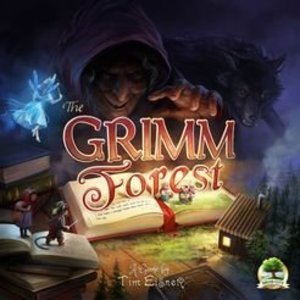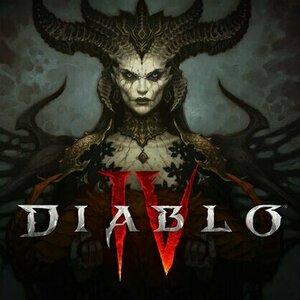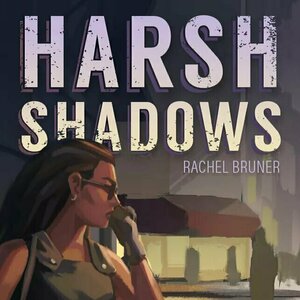
Fashion Makeup Salon Games 3D: Celebrity Makeover and Beauty Studio Game
Beauty, Games and Lifestyle
App
***Are you tired of playing old and boring beauty salon makeover girl games that don’t offer the...
Purple Phoenix Games (2266 KP) rated The Grimm Forest in Tabletop Games
Apr 9, 2021
The Grimm Forest is a simultaneous action selection, set collection, take that game for four family members of the infamous Three Little Pigs. As fantasy contractors players are tasked with constructing three houses as sturdy and quickly as they can. However, these contractors will have competition for limited resources, as well as the occasional interference from scary creatures and buddies of opponents. Like the baseball movie says, “If you build it, you will win the contract to build more stuff.” Or something like that.
DISCLAIMER: We were provided a copy of this game for the purposes of this review. This is a retail copy of the game, so what you see in these photos is exactly what would be received in your box. I do not intend to cover every single rule included in the rulebook, but will describe the overall game flow and major rule set so that our readers may get a sense of how the game plays. For more in depth rules, you may purchase a copy online or from your FLGS. -T
To setup, place the Location boards on the table for the Fields, Forest, and Brickyard (for a three-player game, as below). The First Builder Bonus tokens are placed below the matching Locations as well as the resources that can be harvested. One of each Mega Resource (5 Straw, 4 Wood, 3 Brick) are placed on the matching Location at the beginning of each round. The Friend and Fable decks are shuffled and placed nearby, as are the House sections (Floors, Walls, Roofs – Rooves?), and the Monster minis. Each player chooses a color and collects the Player board, Pig mini, and Gather cards matching that color. The first player is given the Starting Player tome token and the game may now begin!
The Grimm Forest is played over a series of rounds with each pig having a multi-step turn. Initially, however, the pigs will be deciding from which Location they would like to harvest resources by laying the corresponding Gather card from their hand to the table face-down. Once all pigs have laid their card, the Gather cards are flipped and revealed simultaneously. If any pig had chosen to also play one Fable card it would have been revealed and possibly resolved prior to this step. Players will place their Pig mini on the Location board they chose and then harvesting of resources may begin, unless a player has a Fable card that resolves at this point in the turn. If a Pig is alone in a Location they receive all resources currently found there. If Pigs share a Location then the shared minis will share the resources equally, keeping any remaining resources on the Location for the next round. If any player used a Fable card that activates at the end of the Gather phase, it is resolved now.
After the Gather phase, the Pigs will be able to take actions. On their turn, in turn order, each Pig may choose to perform two of the following actions in any order they wish (actions may be repeated except for Friend Special Actions): Draw a Fable card, Gain 1 Resource, Build, Special Actions. Drawing a Fable card is self-explanatory and players will keep their Fable cards secret from the other players. They may choose to play one of these Fable cards during the choosing of Gather cards portion of the beginning phase of a turn. A Pig may instead wish to gain one resource of their choosing and add it to their collection. As mentioned earlier, a Pig may also use their active Friend card’s (which is earned by building a Wall section) Special Action once per turn, should they have collected one earlier.
The true hero of The Grimm Forest is the Build action as this is what propels players to victory. Pigs may Build any house type they wish, as long as that type is not currently under construction elsewhere on their board. Also note that houses must be built from the ground up so Floors must be present before Walls can be built and Walls need to be constructed in order to hold up a Roof. Pigs may build these sections of houses by discarding the appropriate number and type of resources they have gathered previously: two resources for a Floor, four resources for Walls, and six resources for a Roof. Once a Pig completes construction of the first house of a type they will grab the matching First Builder Bonus token and reap its rewards.
The game continues in this fashion until one player has built three houses of any type, or multiple players have completed their three houses by the end of the round. Those tied players then check for sturdiness to break their tie: brick houses are sturdier than wood, which are sturdier than straw. The winner is the player with the sturdiest collection of houses, and then all players are invited to share a plate of bacon in celebration of the win (not in the rules, but I added that for… flavor).
Components. This game is chocked full of killer components. I do not oftentimes compliment boxes and inserts, but when a game comes with GameTrayz already, you know that the publisher cared a ton about the game. Everything sets up and tears down so much nicer and quicker with a GameTrayz insert that I wish every game would come with them. Yeah, I know, $$$. Outside of the insert (or inside?) the other components in the game are simply stellar. Everything from the card backs resembling book covers, the incredible plastic house pieces, and amazing minis, just makes this one sing when on the table. The art is done by the incredible Mr. Cuddington, and they are quickly becoming some of my favorite board game artists.
Wait, there are monster minis? But I didn’t talk about that in my overview. Well, yes, that’s correct. These monsters come into play from certain Fable cards, and when they are played it instructs the player to introduce the appropriate monster mini on the playing area. This can be done with such dramatic flair that you truly get a sense of dread that little piggies may feel. If you have seen Stranger Things (not a sponsor) and remember the part when the Demogorgon mini hits the table, then you understand how I introduce my monster minis. These monsters wreak havoc on the players and sometimes deny them resources, and other chaos to mess with pigs.
Overall, I am so enamored with this game. It has nearly everything I love about games. It has amazing theme and art. That is always big with me. The components are super high quality, as all Druid City Games/Skybound Games usually are, and the game is so smooth once it is learned. All phases and turn components work together well, and there are plenty of choices each player makes every round. The game comes with advanced rules and components as well once all players are comfortable with the base game, and I love when games come with that added complexity and difficulty.
I have nothing bad to say about this game at all, which makes me sad, because I can usually find something to improve with every game I play. Okay wait, I just thought of one: I appreciate that the player colors include both orange and purple, but then the others are blue and green. I think the player colors could have come with some different choices as I feel blue, green, and purple are within similar color bands. Maybe pink and aqua would be better choices for my taste? I don’t know, and I am sure research was done to decide on the player colors, but like I said, I needed to find SOMETHING to complain about.
So it is certainly no surprise that I love this game and rated so highly. I doubt it will ever truly break into my Top 10, but I feel it ticks all of my boxes for a great game and a 6 from me. Purple Phoenix Games as a whole gives this one a porky 15 / 18. If you are looking for a great game that is admittedly lighter, but gives great gameplay throughout, features incredible art and components, and offers opportunities for role-play then you definitely need to grab a copy of The Grimm Forest. I will be recommending this to so many gamers in the future, and I will be pushing the floor of the age suggestion on the box once my son decides he wants to learn to read. I think I am going to go try out the Advanced rules now, and remember: don’t eat an apple that a scary person gave you at the door.
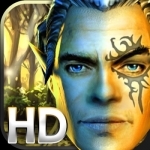
Aralon: Sword and Shadow
Games and Entertainment
App
The sequel for Aralon arrives on December 3rd on iOS!!! That which is done cannot be undone, but...
Purple Phoenix Games (2266 KP) rated Mob Sitters in Tabletop Games
Sep 17, 2019
Disclaimer: This preview is based upon a preview copy of the game. The final components, rules, and gameplay may differ from those described in this review! -L
In Mob Sitters, you take on the role of a babysitter working for the mob. Just because crime pays the bills doesn’t mean these mobsters don’t have families! You’re no ordinary babysitter though, otherwise you wouldn’t be mixed up with the mob. You’ve got plans of your own – whether it’s stealing from your boss, ratting out your rivals to the cops, or actually just some innocent babysitting, there’s money to be made here!
Mob Sitters is played over six rounds in which you take turns playing cards (some hidden and some not), targeting or reacting to your opponents, and collecting that sweet sweet money. Let’s break it down. To start the game, each player receives a player mat and deck of cards for their chosen character. There will be 8 characters in the final game, but only 6 are present in the preview copy. The different characters do not have any special powers or abilities, they just have different artwork on their cards! Shuffle your decks, draw a hand of 6 cards, determine a starting player, and you’re ready to go.
Each player’s turn consists of 6 steps (Steps 1-3 are not applicable in round 1, and Steps 4-6 are not applicable in the final round). Step 1 is to earn money – any cards with a monetary value that are in your play area are moved to your Safe and will count towards end-game scoring. It is important to note that cards that earn you money (Steal and Job cards) must be played face-up into your play area. Step 2 is to reveal and resolve any Accusation cards in your play area that you want to. Accusation cards allow you to target an opponent’s Job/Steal card currently in play, in an attempt to discard it to their Cops/Boss piles, respectively, to count against that player in end-game scoring. The targeted player does not have to sit idly by and watch their money go down the drain, however. If the targeted player has a Reaction card face-down in their play area, they may reveal it to deflect the blame to yet another player! If you successfully deflect the blame, that money will not count against you, but will instead count against the next player blamed who is unable to react to and shift blame to someone else. To play a Reaction card, it must already be in your play area – you cannot play one directly from your hand! The next step, Step 3, is to discard any remaining face down cards in your play area. In Step 4, you choose 3 cards from your hand and play them into your play area. Job/Steal cards must be played face-up, but Accusation and Reaction cards can be played face-down. During Step 5, you resolve any face-up accusation cards you may have played in Step 4. The final step, Step 6, of your turn is to draw 3 cards, bringing your hand back up to 6 cards. Play then moves on to the next player, who then will perform their 6 steps, and so on. After 6 rounds, the game ends. Scoring varies depending on how many players there are, but ultimately the winner is the player with the most money in their safe!
I know that sounds like quite a lot going on, but believe me when I say the game plays pretty well (and pretty quickly) once you’ve gotten the hang of the turns. On paper, the sheer number of steps per turn seems excessive and like it would bog down the gameplay, but in actuality, the actions performed in each step are simple and fast. Perhaps if the number of steps were condensed from 6 down to maybe 3-4, the gameplay would seem a little less daunting. There is some slight ambiguity between the types of cards and into which stacks they go – the rules call cards Job and Steal cards, but the player mat refers to Boss and Cop cards. Fortunately the cards have symbols that correspond to the different stacks, so when in doubt, check the corner of the card!
Let’s talk components. This is first and foremost a card game, and the cards I received are of good quality! They shuffle well, and feel sturdy enough to withstand many plays. The art on the cards is pretty cute, the colors really pop, and there are some fun puns to be found on several Steal/Job cards. As for the player mats, this is only a preview copy of the game so I just printed them out (apologies for my lack of access to a color printer!), but their text is clear and helpful for remembering turn steps. The components may change throughout the Kickstarter campaign, but so far they’re off to a good start!
So how does it play? For the most part, Mob Sitters plays pretty quickly and is engaging for all players. There’s a good amount of strategy involved, as well as some luck and a whole lotta take that. All players receive identical decks of cards, which are then shuffled, so although you know what cards are available to your opponents, you never know what they currently have in their hand. You’ve got to be watchful of which cards your opponents play, to see if you can deduce which cards they have remaining. Are they taking the offensive approach and accusing everyone? Or are they being more subtle and taking a defensive stance, deflecting all accusations onto others? You have to decide when is the right time to play your cards to ensure that you aren’t targeted by too many opponents. Your strategy is ever-changing to adapt to the cards currently in your hand, and that’s what takes Mob Sitters to the next level for me.
Mob Sitters is a quick, easy, and fun game for any sized group. Hilarity ensues when accusations result in all players pointing fingers and trying to deflect blame. Although it can be played with 3, I think this game is better suited for 4+ players. With a smaller group, some of the aspects of ‘take that’ can feel personal and lead to tension between players. But a larger group can eliminate some of the animosity caused by always being targeted by the same person the entire game. Overall though, I enjoyed getting to play Mob Sitters! It has a unique theme and simple, yet strategic, gameplay that will keep all players on their toes. In my communications with the designer, I have learned that the retail version of the game will include “Hidden Agenda” cards to provide each player with a secret objective. There is also an expansion already in the works – The Heavy Mob Deck – that will add more cards and more complexity for experienced gamers!
If you enjoy games of hidden information, take that, and a little bit of bluffing, definitely check Mob Sitters out! It’s more than the standard party game, but still fits the categories of light, fast, and easy to learn games for all players. I look forward to following this upcoming campaign, and I definitely will be playing my copy again!
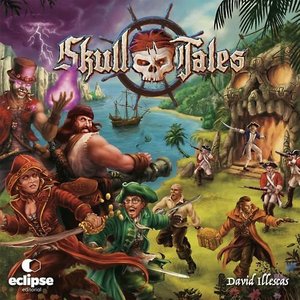
Skull Tales: Full Sail!
Tabletop Game
Skull Tales: Full Sail! Is a semi-cooperative pirate adventure game for 1 to 5 players. In Skull...
Boardgames Pirategames 2018Games
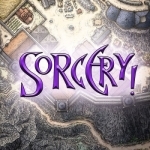
Sorcery! 4
Games and Book
App
An epic adventure through a cursed citadel of monsters, traps and magic. Begin your journey here...

School of Dragons: How to Train Your Dragon
Games and Education
App
FEATURES • Visit with familiar friends like Hiccup, Toothless and others from the “How To Train...
Gareth von Kallenbach (980 KP) rated the PC version of Diablo IV in Video Games
Jun 22, 2023
I chose to play as a barbarian as I am not a huge fan of resource gathering, crafting, or playing in a support role, and preferred to mix it up close quarters taking as many enemies as I can with me before I go down in a blaze of glory.
As players gain experience they will be able to increase their abilities many of which can be deployed on a timed basis and grow increasingly powerful as players level up. Players will also be able to obtain armor, weapons, charms, and more along the way which can be recycled, sold, or crafted into various upgrades in the numerous towns and communities throughout the vast map of the game.
Players will be able to complete the main quests and side quests along the way which will gain experience upon successful completion as well as defeating enemies in combat. The sheer distance between objectives can be daunting especially when the map is not clearly shown for a specific area as players may sometimes have to go a considerable distance one-way just be able to detour back toward their intended destination.
Thankfully various locales do have vast travel options that once discovered and unlocked allow players to travel between locales quickly. Being able to leave a dungeon to return to a community in order to sell gear, upgrade weapons and armor, and obtain necessary items before returning from the locale they originated from, is a key to survival.
In time I was able to obtain a horse that not only allows me to travel quicker between locales but prevented enemy mobs from attacking me so later in the campaign, I was able to focus on objectives more than dealing with unending waves combat while trying to travel between locales.
Players will encounter other players along the way and the game does have a social factor that allows for friends and players in the local area to be invited to campaign with you. This is a bit of a challenge at first as I found many players were power leveling and did not want to become involved with lower-level players.
While I completed much of the game solo, there were various bosses that I simply couldn’t handle alone, and was very grateful when I was able to obtain help. This changed when I reached higher levels as being able to complete the final campaign with three helpers made a challenging endeavor very enjoyable.
The map of the world is highly detailed as everything from towns, dungeons, villages, and supernatural realms are crafted in incredible detail and the vast number of enemies and their varieties is impressive even if at times frustrating as you have to battle your way through seemingly unending mobs to reach your destination.
Upon completing the game I will be venturing back from time to time to complete side quests and better prepare for the likely future content that will be coming down the line. While it is been popular some players and local community boards have been vocal about criticism for the game which I believe has varied from nitpicking to valid but I can honestly say I enjoyed this game significantly more than Diablo 3 and for me, Diablo IV is one of the best releases of the year and has been an enjoyable gaming experience throughout despite some frustrations along the way.
4.5 stars out of 5
Share this:
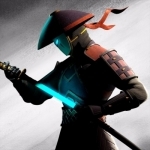
Shadow Fight 3
Games
App Watch
Step into the world of shadows at the time of changes. Reveal all its dark secrets and become the...
games
Purple Phoenix Games (2266 KP) rated Harsh Shadows in Tabletop Games
Apr 20, 2021
Disclaimer: We were provided a copy of this game for the purposes of this preview. The pictured components might not be finalized, and could differ after a successful Kickstarter campaign. -L
Harsh Shadows is a solo card game of hand management, grid movement, and deduction where you are an agent working to collect evidence necessary to apprehend an enemy spy. To setup for a game, randomly place the 9 Location cards in a 3×3 grid. Prepare the Discovery deck as described in the rules, place 1 face-down Discovery card to the right of each Location, and place the rest of the deck off to the side of the grid. Shuffle the Confiscated Item cards and deal the appropriate number to each of the Case File cards – 3 to Evidence, 1 to Red Herring, and 4 to False Leads. The Spy card is placed on the upper-left-most Location, and your Agent card on the lower-right-most Location. Shuffle the Spy Movement cards, and the game is ready to begin! It should look similar to the picture below.
The game is played over a series of rounds in which you will be moving your Agent, performing additional actions, and then moving the Spy. The goal is to track down the Spy, with the correct evidence in hand, before the Spy is able to flee the scene. The first thing that you will do each round is to move your Agent. You may only move to a Location that is adjacent or diagonal to your current Location. Once you move to a new Location, you will draw the top Discovery card from that Location. Discovery cards will either be Items, Clues, or Bombs. Items are collected as potential Evidence, Clues are used to reveal Confiscated Items from Case Files, and Bombs force you to discard a card from your tableau. After you have moved and collected a new Discovery card, you may perform any/all of these additional actions: Use Clue Cards, Place the Tracking Bug, Track the Spy, or Use your current Location’s ability. To Use Clue cards, you will discard a number of clues in order to reveal a Confiscated Item card from a Case File. The Confiscated Items under the Evidence Case File show the 3 items you are required to have in hand to apprehend the Spy by the end of the game. The item under the Red Herring, if you have it in hand at game’s end, will cause you to automatically lose. The 4 items under the False Leads will neither help you win, nor cause you to lose – they simply offer fodder for you to discard when necessary.
Another element required to win the game is to place the Tracking Bug on the Spy. On your turn, you may place the Tracking Bug at your current Location card – if the Spy moves to the Location on a future turn, they are considered to be ‘bugged’ and the Tracking Bug is live! Twice per game, you are allowed to Track the Spy. To do so, you will look at the top card of the Spy Movement deck, and return it to the top. This just lets you see to which Location the Spy is about to move. And finally, you can use your Location’s ability. Once you have taken as many of the additional actions as you want, it is time to move the Spy. Reveal the top card of the Spy Movement deck, and move the Spy in the appropriate direction to a new Location. At the Spy’s new Location, add a Discovery card to its pile. Play continues in this manner until either you make an accusation, or the Spy escapes. In order to make an accusation, you must have Evidence cards in hand, the Spy must be bugged, and you must be at the same Location as the Spy. When you make an accusation, you will reveal any remaining cards under the Evidence and Red Herring Case Files. If you have the 3 matching Evidence cards, you win and apprehend the Spy! BUT if you have the Red Herring card, or you are missing any of the required Evidence cards, you lose. If you haven’t made an accusation in time, the Spy could escape, causing you to lose the game as well – I’ll leave those details for you to discover on your own!
In theory, Harsh Shadows seems like a neat and strategic card game, but how does it hold up in reality? Pretty well, actually! The first thing I want to talk about is how strategic it is, even with its elements of deduction. You need to collect Evidence fast in order to catch the Spy, so what’s the best plan of movement? Also, each Location has a special ability, so is there an ability you need to use now or do you want to wait a bit longer? After using a Location’s ability, it is no longer available for the rest of the game, so you have to time those uses carefully. Along those lines comes the deduction. Sure, you can try to reveal all the Confiscated Items so that you’re 100% sure that you’ve got the right Evidence. But if you don’t work fast enough, the Spy could escape. Are you willing to risk only knowing for sure what 1 piece of Evidence in order to confront the Spy before it’s too late? Or do you want to save up Clues to purchase that coveted Red Herring, to know for sure what not to keep in order to win. There’s a balance of risk with deduction, as well as a real-time element in the sense that the game has a finite amount of rounds. You’re not racing a physical clock, but once the Discovery deck runs out, the Spy is considered to be on the run, on the verge of escaping. Overall, this is a casual card game, but it has a decent amount of strategy to keep you engaged and entertained.
Let’s touch on components for a second. Obviously, this is just a card game, and this is a preview copy. As I said earlier, the final production could differ from this version, but I have to say that this preview copy is good quality. The cards are nice and thick, the artwork thematic and clean. I imagine the rules would get some final edits for slight clarifications, but for the most part the production quality is already pretty decent.
I have to say that Harsh Shadows surprised me. I’d never played a solo game with deduction elements, and it was actually quite exciting. Usually the deduction games I’ve played are based around sussing out a traitor amongst a group of people, so there is that human interaction element that can really help guide your thoughts and decisions. In Harsh Shadows, there’s nobody but yourself – you can’t look for tells in other players because the cards won’t speak to you. It feels riskier in this way because it’s more a game of odds then, instead of your ability to pick out social cues. Other people may feel differently, but I thought this was a neat twist on the deduction mechanic. If you’re looking for a strategic solo game, that plays relatively quickly and casually, I would definitely recommend checking out Harsh Shadows. It goes live on Kickstarter here in April, and I look forward to following its progress!
